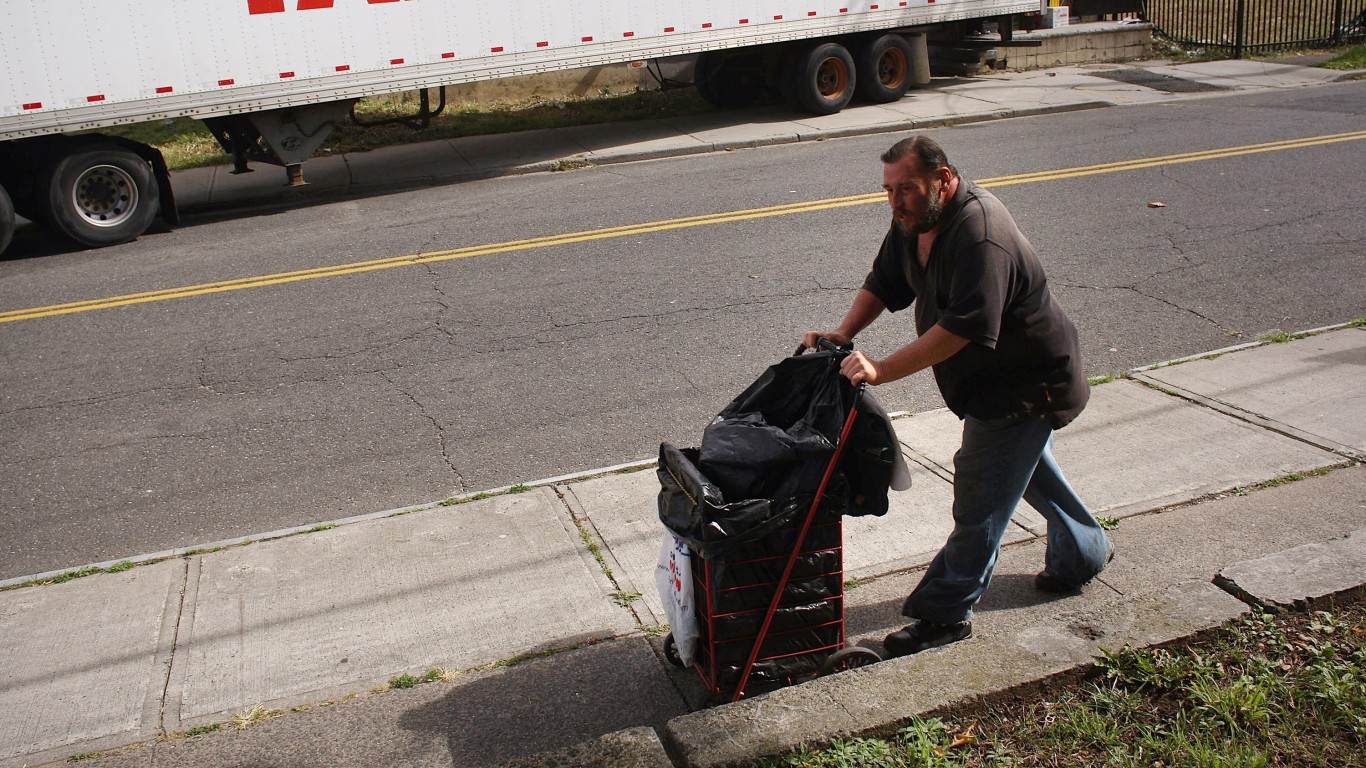Health and Healthcare
Op-Ed: Hardship Growing as Pandemic Enters 11th Month, New Census Figures Show

Published:

This Op-Ed article from the CBPP does not reflect the opinions of the editors of 24/7 Wall St.
A large and growing number of people are struggling to meet basic needs, according to Census Bureau Household Pulse Survey data released this week, and households with children in particular have had trouble affording enough food. The rise in hardship at the close of 2020 likely reflected, in part, weaknesses of the relief packages enacted in the spring, including measures that didn’t last long enough — like increased jobless benefits that expired over the summer and stimulus payments whose impact faded later in the year — and gaps in the measures, like inadequate nutrition and housing assistance, that left many families unable to afford the basics.
The relief package enacted in December will provide much-needed help to millions of families through measures such as increased unemployment benefits and food assistance, new emergency rental assistance, and another round of stimulus checks. But like last March’s CARES Act, these measures have a short duration and important gaps. Key jobless benefit provisions will expire in the middle of March; rental assistance funding will help only a fraction of the households falling behind on rent; and aid to states, localities, tribal nations, and territories is inadequate, likely leading to further budget cuts by these governments.
Moreover, the nation’s unprecedented health and economic crises will likely last well into 2021 and beyond. COVID-19 continues to surge; distributing vaccines widely will take time; in December the economy lost jobs for the first time since April and long-term unemployment continued rising; and employment typically takes longer to recover for some groups, like those without a college degree and Black workers. (Due to this nation’s history of structural racism, which curtails job opportunities for Black people, Black workers tend to be “the last hired and first fired.”) The extent and severity of hardship this year will largely depend on whether President Biden and the new Congress swiftly build on the December package by providing additional relief and extending key relief provisions until the pandemic recedes and the economy recovers sufficiently.
According to Household Pulse Survey data collected December 9-21, just prior to passage of the relief package:
29 million adults (14 percent) reported their household sometimes or often didn’t get enough to eat in the last seven days — the most in comparable Pulse data available back to late August and 2 million more than the previous Pulse release, in late November. This figure has risen by 7 million adults since late August.
90 million adults (38 percent) reported it was somewhat or very difficult for their household to pay for usual expenses in the last seven days — also the most in data back to late August and 4 million above the previous Pulse release. Since late August, this figure has risen by 13 million adults.
In addition, an estimated 14 million renters reported they weren’t caught up on rent. This figure has exceeded 11 million in every data release since late August.
Although we lack precisely comparable data on the severity of hardship before and after the pandemic started, available data on food insecurity indicates hardship has worsened significantly. Some 14 percent of adults surveyed December 9-21 reported their household sometimes or often didn’t get enough to eat in the last seven days. That’s far above the 3 percent who reported in a separate survey that their household had “not enough to eat” at some point over the full 12 months of 2019, according to our analysis of the Household Pulse Survey and the December 2019 Current Population Survey Food Security Supplement.
Adults with children have faced larger struggles putting food on the table, which is particularly concerning since food insecurity can harm children’s health and their academic outcomes for years to come. In the latest Pulse survey data, 18 percent of adults living with children reported their household didn’t get enough to eat in the last seven days. That’s more than four times the share (4 percent) whose household didn’t get enough to eat at some point in 2019. The share for adults without children was 11 percent in the latest Pulse data, three times the share in the 2019 survey.
.
Retirement planning doesn’t have to feel overwhelming. The key is finding expert guidance—and SmartAsset’s simple quiz makes it easier than ever for you to connect with a vetted financial advisor.
Here’s how it works:
Why wait? Start building the retirement you’ve always dreamed of. Click here to get started today!
Thank you for reading! Have some feedback for us?
Contact the 24/7 Wall St. editorial team.